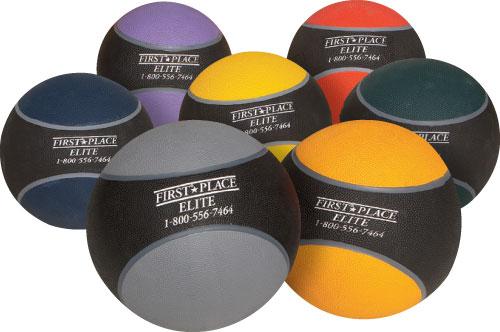Western Movement
Written by Gray Cook FMS
The term "western movement" is not used here to indicate westward relocation. Unfortunately, it is used to describe the way westerners are starting to move, and that movement doesn’t look good. Ironically, non-westerners who have adopted a western lifestyle will probably start to move the same way as they experience an erosion of fundamental movement patterns.
To be clear and more specific, we could discuss western-type movement patterns the same way we discuss the western-type diet. Both are likely components of the so-called western diseases. The western diseases are actually chronic health consequences associated with a lifestyle of the typical citizen of the United States as well as cultures that mimic our diet and exercise habits.
Breast cancer, prostate cancer, coronary heart disease and colon cancer are at the top of the list of western diseases. Our lifestyle could also serve as the best recipe to produce all-time record numbers for obesity and diabetes—a disease we now share with our children. Researchers mainly focus on our diets and in this they are completely justified, but the problem seems to be associated with a complete lifestyle, intake as well as output.
Our lifestyle is generations removed from the natural limitations that forced balance and moderation. Our exercise and rehabilitation mistakes equal our poor dietary choices, but as yet are not as well documented. Even though we seem obsessed with diet and exercise, we do not practice either in accordance with time-honored fundamental principles. Our success on this planet has less to do with our intelligence than our adaptability, and we are now losing that unique quality.
We are known as omnivores, meaning we can eat a large variety of either plants or animals and receive vital benefits from that diversity. Moderation, balance and variety are basic components of our success. The greater the balance and variety, the greater the benefit, and for most of our time on this planet, natural obstacles produced moderation for us. Those days are over, and our obsession with convenience, comfort and speed has actually reduced the benefits of all three factors. Our food quality and variety continue to decline, but the quantity of things we like is always in reach.
We could also be called omni-exerceos since “Omni” in Latin means all or everything and “exerceo” means to train, exercise, practice, cultivate and generally keep at work—basically… exercise.
Our exceptional anatomical structure controlled by a highly adaptable brain allows us to perform a variety of fundamental and vital movement patterns. Over time, environmental stresses produced a body that could crawl, climb, walk, run, swim and fight. We can lift, throw and swing things.
We have the perfect blueprint to adapt and succeed. The way we learn, produce and maintain functional movement patterns are at the heart of our triumph. Those early adaptive days are over, though, and our obsession with expediency and convenience reduces variety and therefore compromises adaptability. Our exercise quality and variety continues to decline. Some may argue that our exercise choices are vast and they would be correct, but once we select an exercise from our infinite menu, we specialize and move away from variety. We focus on one or two items and that is all we do.
Our exercise mistakes seem to migrate to both extremes. Some do little or nothing, while others intensely focus on a solitary physical endeavor. Some even take shortcuts in the name of the physical ideal or athletic performance, but shortcuts leave telltale signs and side effects. Nature does not allow shortcuts. Instead, it imposes necessary limitations that produce holistic, complete and adaptable outcomes.
However, specialization is not the problem. We all have specific activities that interest us and we should pursue them. We simply need a gauge to indicate when specialization erodes the quality of fundamental pattern or patterns. The best way to understand the implications of exercise on authentic movement patterns is to screen or test them. If they are compromised, exercise is not the problem— fundamental movement patterns are the problem, and both intense activity and inactivity will reinforce it. Conversely, if a particular lifestyle does not produce dysfunctional movement patterns, that does not imply an individual is fit, but suggests a pursuit of fitness with minimal risk of injury. However, if a particular lifestyle produces dysfunctional movement patterns, the pursuit of fitness could actually increase risk of injury.
It is no longer a case of just get out there and move. We must establish that movement is fundamentally sound because it can no longer be assumed as a birthright of every human. Our lifestyle no longer forces physical adaptability, and therefore the fundamental mobility and stability that allows us to easily adapt to natural and physical changes has been compromised.
We eat, work and recreate differently than our ancestors and populations without our conveniences and sedentary lifestyle. Many of us are overfed and undernourished at the same time. That concept strikes at the heart of our food quality and is largely undisputed. A focus on food quantity and convenience instead of quality has produced this result. Unfortunately, the same argument should be made for our exercise.
When bodies move poorly, people question the quantity of movement opportunities and incorrectly assume that quality is adequate. In the book Movement, we develop a logic-based system that weighs movement quality against our current knowledge of movement quantity. We demonstrate methods to help the exercise and rehabilitation professional rate and rank movement-pattern quality and understand the implications and remedies when dysfunction is discovered.
When the quantity of food consumed is extreme or restricted, the results are obvious. The effects of poor food quality are more subtle, but can be equally damaging. The same is true with exercise. We can quickly identify the quantitative exercise problems of too much or not enough, but we do not currently have a gauge for the subtle effects of poor movement quality compounded by exercise.
Current evidence suggests that risk of injury is associated with poor movement quality, yet we have failed to establish standards and minimums to guide us to more effective management and programming. Movement challenges the exercise and rehabilitation professional to understand and implement the logic and systems that consider movement quality alongside quantity.

Western diseases are reversible and we do not need to look any further than the western lifestyle for guidance. If we manage the quality and quantity of our intake and output, we will return to the authentic balance of our ancestors.
Related Resources
-
Training From the Ground Up
Posted by Chris Frankel
Please login to leave a comment
2 Comments
-

Halman Hunte 12/18/2014 7:03:58 PM
Great insights that may already know, presented in a very clean and concise form.
-

Tina Larin 12/18/2014 7:13:46 PM
Very well said! Enjoyed the objective perspective






